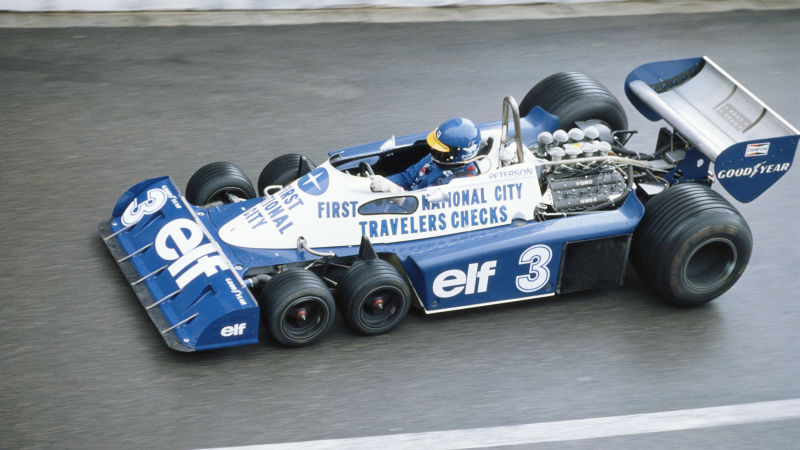
The six-wheel Tyrrell P34 is one of the most iconic car designs in Formula One history. It had to have had some kind of engineering reasoning behind it, right? But what in the world can it even be?
DRIVETRIBE had the same question, so they visited former F1 world champion Jody Schectker to see the historic beast in real life and give viewers a quick rundown on what the intention was and how it was supposed to work. You can check it out here:
After years of rapid innovation, F1 tech started to get a little stuffy in the late 1970s. It was the start of standardization across the board, with teams realizing what particular parts and design cues contributed to race day success. But Ken Tyrrell wasn’t content with that—it was time to try something totally radical to see if it could give his team a competitive edge.
But why in the name of the lord would they opt for this particular design?
As the video explains, four tires at the front of the car offers a hell of a lot more grip than just two—even if, at ten inches, the tires are a lot smaller than what you’d traditionally see on an F1 car. That suggests you’d be able to corner a hell of a lot better, with more speed and efficiency.
Advertisement
Smaller wheels gave another advantage: they could be tucked behind the front bodywork of the car, which meant the frontal area of the car was reduced and therefore was more aerodynamically friendly. Plus, small wheels meant smaller wheel and suspension components—and therefore less lift when the air really started flowing.
Those aero changes were impressive: as we learn in the video, it added a 40 bhp advantage to the P34, which was just enough of an edge above competitors that it gave the drivers of the car a better shot at winning.
Advertisement
If you haven’t seen it yet, here’s a great video of Jackie Stewart narrating a lap of Paul Ricard behind the wheel of the P34:
However, the first thing Jody Scheckter recalls about the car when asked was “it broke a lot.” All those different, smaller components proved to be pretty finicky, to the point where it could be a little scary from the driver’s perspective. That said, Scheckter admits to being quite fond of oversteering—something that the increased amount of grip from the two front wheels was great at handling. It was basically the ideal setup for a driver like him.
Advertisement
The latter half of the video dives into the downsides of an otherwise ingenious design, which mainly came in the form of braking performance. Smaller tires means smaller brakes, and smaller brakes means a tendency to overheat and wear away during a race. The wheels were also prone to locking up—meaning Scheckter often had to lift off the brakes when going into a corner. It kind of defeats the whole purpose of the design.
There was also a problem with actually seeing the tires. It was crucial for drivers to see those front tires to position themselves perfectly on the racing line—hence the weird portholes in the cockpit… which were positioned in such a way that they would quickly get covered in dirt. Yet again, an innovative design was defeated by failure to consider all the consequences.
Advertisement
It would be pretty reasonable to say that the P34 remains one of the most iconic F1 cars in history because it was the only six-wheeled vehicle to compete in races. It was a wild, novel idea with a lot of solid reasoning behind it.
Unfortunately, the P34 was defeated by its own ingenuity—hence why we don’t see any six wheeled cars on the grid today.













